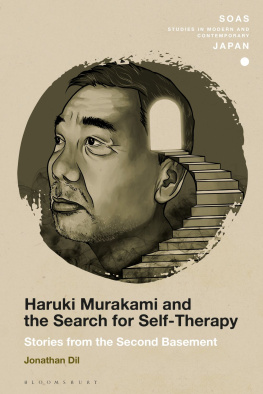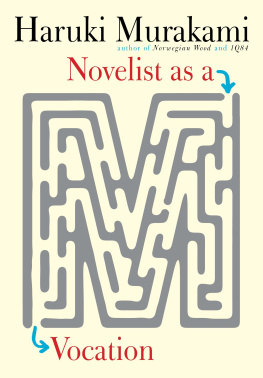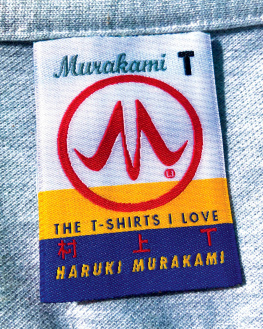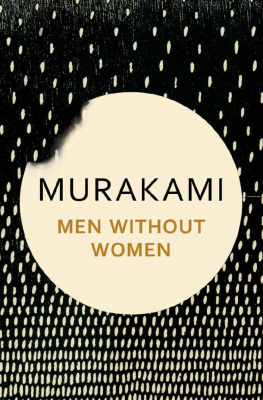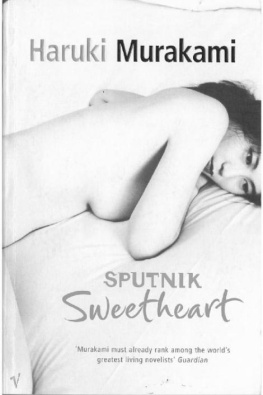
Haruki Murakami and the Search for Self-Therapy
SOAS Studies in Modern and Contemporary Japan
SERIES EDITOR
Christopher Gerteis (SOAS, University of London, UK)
EDITORIAL BOARD
Stephen Dodd (SOAS, University of London, UK)
Andrew Gerstle (SOAS, University of London, UK)
Janet Hunter (London School of Economics, UK)
Barak Kushner (University of Cambridge, UK)
Helen Macnaughtan (SOAS, University of London, UK)
Aaron W. Moore (University of Edinburgh, UK)
Timon Screech (SOAS, University of London, UK)
Naoko Shimazu (NUS-Yale College, Singapore)
Published in association with the Japan Research Centre at the School of Oriental and African Studies, University of London, UK.
SOAS Studies in Modern and Contemporary Japan features scholarly books on modern and contemporary Japan, showcasing new research monographs as well as translations of scholarship not previously available in English. Its goal is to ensure that current, high-quality research on Japan, its history, politics, and culture, is made available to an English-speaking audience.
Published
Women and Democracy in Cold War Japan, Jan Bardsley
Christianity and Imperialism in Modern Japan, Emily Anderson
The China Problem in Postwar Japan, Robert Hoppens
Media, Propaganda and Politics in 20th Century Japan, The Asahi Shimbun Company (translated by Barak Kushner)
Contemporary Sino-Japanese Relations on Screen, Griseldis Kirsch
Debating Otaku in Contemporary Japan, edited by Patrick W. Galbraith, Thiam Huat Kam and Bjrn-Ole Kamm
Politics and Power in 20th-Century Japan, Mikuriya Takashi and Nakamura Takafusa (translated by Timothy S. George)
Japanese Taiwan, edited by Andrew Morris
Japans Postwar Military and Civil Society, Tomoyuki Sasaki
The History of Japanese Psychology, Brian J. McVeigh
Postwar Emigration to South America from Japan and the Ryukyu Islands, Pedro Iacobelli
The Uses of Literature in Modern Japan, Sari Kawana
Post-Fascist Japan, Laura Hein
Mass Media, Consumerism and National Identity in Postwar Japan, Martyn David Smith
Japans Occupation of Java in the Second World War, Ethan Mark
Gathering for Tea in Modern Japan, Taka Oshikiri
Engineering Asia, Hiromi Mizuno, Aaron S. Moore and John DiMoia
Automobility and the City in Japan and Britain, c. 19551990, Simon Gunn and Susan Townsend
The Origins of Modern Japanese Bureaucracy, Yuichiro Shimizu (translated by Amin Ghadimi)
Kenkoku University and the Experience of Pan-Asianism, Yuka Hiruma Kishida
Overcoming Empire in Post-Imperial East Asia, Barak Kushner and Sherzod Muminov
Imperial Japan and Defeat in the Second World War, Peter Wetzler
Gender, Culture, and Disaster in Post-3.11 Japan, Mire Koikari
Empire and Constitution in Modern Japan, Junji Banno (translated by Arthur Stockwin)
A History of Economic Thought in Japan, Hiroshi Kawaguchi and Sumiyo Ishii (translated by Ayuko Tanaka and Tadashi Anno)
Haruki Murakami and the Search for Self-Therapy, Jonathan Dil
Haruki Murakami and the Search for Self-Therapy
Stories from the Second Basement
Jonathan Dil

Contents
This book has taken many years to write, and I have been supported along the way by numerous people, many of whom it is my pleasure to thank here. First on the list is Dr. Kenneth Henshall, who was my primary supervisor when I wrote my PhD thesis at the University of Canterbury, New Zealand, entitled Haruki Murakami and the Search for Self-therapy (2008). I spent part of my time working on that thesis in Japan on a Monbukagakush scholarship and meeting regularly with Dr. Matthew Strecher, who was based at Ty University at the time. Ken and Matthew are my earliest academic mentors and Im grateful to them both for the many hours they spent talking to me and reading my earliest drafts as I struggled to work out the ideas that would eventually make it into my thesis, in essence, the first draft of this book.
In 2018 I was granted a sabbatical from my present position at Keio University, and I decided that I would use the time to significantly rethink and update my thesis and get it published as a book. With an introduction from my colleague, Dr. Imoto Yuki, I approached Dr. Linda Flores of Oxford Universitys Oriental Institute, who kindly agreed to support my application to be a visiting scholar at the Institute for a year. I spent much of that year working on the first and second floors of the Bodleian Library and Radcliffe Camera, with regular journeys into the first and second basements of the Gladstone Link to look up different references. As readers of this book will come to realize, the architecture of these iconic buildings was a fitting space to be working on this project. I was also grateful to have a chance to share my research at Oxfords Nissan Institute of Japanese Studies and to engage with other scholars there.
One thing I realized during my time at Oxford, was that to truly understand what Murakami means when he says that he started writing fiction as a means of self-therapy (a central question in this book), I needed to find out more about his life, and I decided that when I got back to Japan, I would try to do this. Encouraged in large part by my mother, Tina Dil, who spent her early working life as a journalist, I made a trip to Kobe and started talking to several people who had known Murakami before he became a world-famous writer. An important person in this quest was Nagata Minoru, who sadly has since passed away from illness. Nagata-san is one of the unsung heroes of Murakami studies, someone who was determined to protect the history of Kobe High School and to never throw anything away (even when it sometimes got him into hot water). At the end of several hours with Nagata-san, he handed me a copy of an article with some valuable information in it. He never told me explicitly what this information was, but it proved to be an important clue in my own wild Murakami chase. I wish I could have sent a copy of this book to Nagata-san with my thanks to add to his collection.
Nagata-sans information eventually led me to several people who had known a former Kobe High School girl Murakami is sometimes connected with. It has been suggested that this girl played a role in shaping Murakamis early fiction. The information these people shared with me provided some valuable insights into how true this might be. As will become clear in this book, this is a delicate topic within Murakami studies and one that Murakami has so far refused to comment on. I am grateful to those who were willing to talk with me, and I hope that this book rewards the trust they showed in me.
Im also grateful to Murakami, who agreed to be interviewed twice during different stages of this projectonce when I was working on my PhD, and once when I was nearing the completion of this book. While I feel like I probably aged a lot during the interim period between the two interviews, he appeared rather timeless, and I hope he will be running and writing for many years to come.
The team I have worked with at Bloomsbury Academic, involved in the SOAS Studies in Modern and Contemporary Japan series, has been nothing but professional and encouraging in the process of bringing this project to publication. I am especially grateful for the space they provided to publish a book of this length, which takes a comprehensive look at each of Murakamis fourteen novels to date. Im also grateful to the three anonymous reviewers of the book who gave useful feedback about how to make its argument clearer for readers. Dr. Kojima Motohiro read through an early draft of this book and gave me some valuable feedback and encouragement. My mother, Tina Dil, also read through the book, catching a number of errors and helping me to improve general readability, while my father, Lindsay Dil, offered excellent technical support.
Next page
